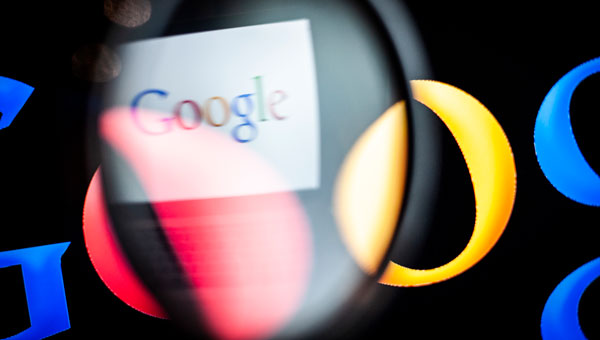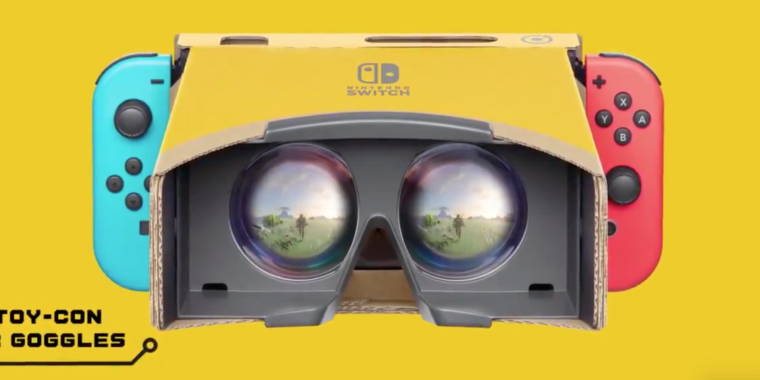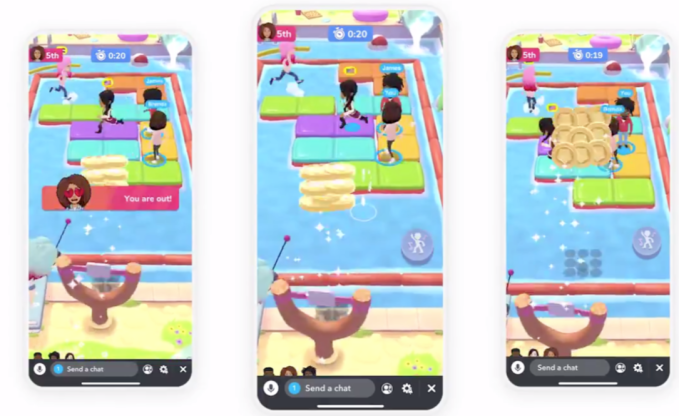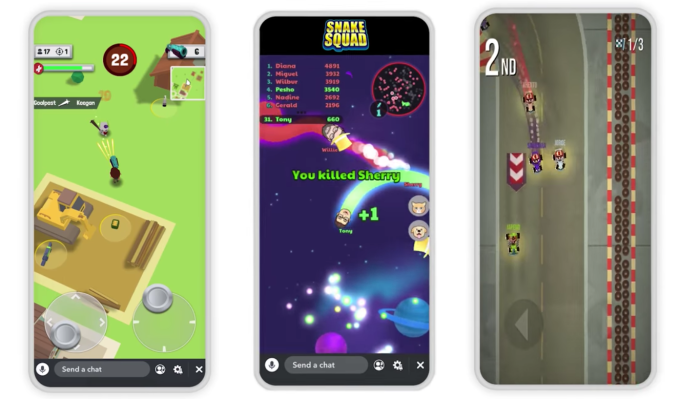
- Associated Press
https://www.technologyreview.com/the-download/613271/google-has-now-cancelled-its-ai-ethics-board-after-a-backlash-from-staff/
2019-04-05 09:08:34Z
52780260714682

The council lasted barely more than a week, after thousands of Google employees signed a petition calling for the removal of one member.
The original plan: The Advanced Technology External Advisory Council was set up to “guide responsible development of AI” projects within Google. It had eight members, including technologists, philosophers, and economists, and was meant to hold four meetings a year, starting this month. One of those members, Alessandro Acquisti, a professor at Carnegie Mellon University, had already announced that he would not be taking up the role. Google says it’s cancelling the whole panel and starting again from scratch, Vox reports.
The trouble: Concerns centered on the inclusion of Heritage Foundation president Kay Coles James on the panel. Her think tank is skeptical about climate change, and she has personally argued against the protection of LGBTQ rights. Another panel member, drone company CEO Dyan Gibbens, was also controversial given his company provides technology to the military— a sensitive subject within Google.
Google’s statement: A spokesperson for Google told Vox: "It’s become clear that in the current environment, ATEAC can’t function as we wanted. So we’re ending the council and going back to the drawing board. We’ll continue to be responsible in our work on the important issues that AI raises, and will find different ways of getting outside opinions on these topics."
That suggests the ethics council will be revived in some form, although it's unclear if Google will try the same approach next time. But if it does, it’s likely it will be rather more careful around who it appoints.
Sign up here for our daily newsletter The Download to get your dose of the latest must-read news from the world of emerging tech.

The Nintendo Labo VR Kit, launching later this month, is arguably the Japanese game maker's first virtual reality product in 24 years. Up until today, the product (which starts at $40) was a self-contained collection of new mini-games, all designed around foldable cardboard controllers.
That changed with a Thursday night announcement: two of the biggest games on Nintendo Switch, Super Mario Odyssey and Legend of Zelda: Breath of the Wild, will receive free VR-mode updates on April 25, two weeks after the Labo VR Kit's launch date. Both will require said VR Kit, which includes a pair of lenses that affix to the Switch's screen and turn it into a makeshift VR headset.
Odyssey's free update will open up three newly designed levels, all based on existing flat-screen worlds from the 2017 game. In these, players will look at Mario from a third-person perspective, which they can shift by rotating their head. This resembles existing VR platforming games like Moss, as opposed to a VR adventure viewed from the famous plumber's first-person perspective. It's unclear whether the camera will remain at a fixed, central point in these three levels, or whether it will follow Mario's movement a la the more dynamic Astro Bot: Rescue Mission.
Meanwhile, instead of creating specific VR zones, Breath of the Wild's upcoming update seems to attach a VR option to the full game. Meaning, players will still have full joystick control of where the game's camera hovers around the character Link, along with a head-tracked option to more finely tune what angle you view him from. That head tracking may factor into series-specific actions like aiming a bow and arrow, but it doesn't appear to put players into a first-person VR experience.
How comfortable either mode will be in practice remains to be seen. Anything short of a locked 60 frames-per-second refresh is notorious for causing motion sickness, and we don't know if Odyssey will continue enjoying a 60fps refresh with a "doubled lens" display on the Switch's screen (which would then be translated by the Labo VR Kit's dual lenses). Breath of the Wild, meanwhile, hovers around a 30fps refresh before it factors its own doubled lens rendering for a VR mode.We don't yet have an indication of how either game's visuals will be updated (or even downgraded) to accommodate for VR's rendering burden. And we can only assume that VR players in both of these modes will have to hold a Switch up to their face like a periscope, then clutch the system's Joy-Cons in that position to play the games. Unlike the Virtual Boy, this Nintendo Labo-ized VR rig does not include a stand that can comfortably press a headset to a player's face.
Thursday's news follows a similar Labo patch for a non-Labo game last year, when Mario Kart 8 Deluxe began supporting the Labo Vehicle Kit's motorcycle set as a motion controller. We honestly wish Nintendo's port of Captain Toad: Treasure Tracker had gotten this Labo VR update, as that puzzle game already includes motion controls for adjusting its cameras, which make the game's clue-hunting thrust a lot easier to manage.
Listing image by Nintendo
Microsoft gaming chief Phil Spencer admitted last year that the software maker had “a ton of work to do on Windows” for PC gamers. Microsoft is now starting to improve its Xbox integration on PC with the unveiling of a big overhaul for the Game Bar feature in Windows 10. Available for beta testers today, the updated Game Bar now includes widgets that look more like the overlays you’d find in Nvidia’s GeForce Experience.
These widgets include many of the features you’d normally find in the Game Bar, but there’s also a host of new ones. Microsoft is integrating Spotify into this feature, allowing you to control song playback during games. There’s also an audio widget for adjusting game volume and outputs, and a widget to monitor your CPU, GPU, and RAM usage. The Xbox Game Bar can be activated by using winkey+G in Windows 10, and this new layout makes it far more glanceable if you wanted to toggle into it and then quickly get back to a game.
:no_upscale()/cdn.vox-cdn.com/uploads/chorus_asset/file/16007552/image011.png)
Microsoft is also making it easier to turn captured screenshots into memes with quick edit and sharing to Twitter features. You can capture a video, add overlay text, and then share it instantly to Twitter, all while this interface hovers above your game. There’s even a new Xbox social widget with a friends list and the ability to quick-send messages from the Game Bar.
Microsoft has really focused on improving the Game Bar from being a simple bar to more of an overlay feature that’s fully customizable. You can pin widgets where you want them and choose which ones to include or hide.
This new Xbox Game Bar is being tested right now for PC gamers, and Microsoft is looking for feedback before this is more broadly rolled out. If you want to test the new Game Bar, you can do so by launching the Xbox Insider Hub on a Windows 10 PC and selecting Windows Gaming from insider content to enable it. Microsoft appears to be finally addressing some of its PC gaming shortcomings, and we’re expecting to see some more work at E3 this year.

The next major Windows 10 update is scheduled for late May, and with it, Microsoft is giving you more control over how you install updates. You'll be able to pause them for up to 35 days (in seven-day increments), when you previously were only able to set an installation time or snooze updates. That should reduce the chances of your computer automatically installing them at the dirt worst times.
Windows 10 will also be able to take into account when you actually use your system to avoid forcing updates during those times. The active hours feature arrived with the Anniversary Update in 2016, and you were supposed to configure it manually. Many of us didn't bother to change the 8AM-5PM default, so the operating system probably tried to update itself outside of those hours -- an annoyance at best for evening workers and night owls.
There's also a Download and Install Now option on the way for the bi-annual feature updates (such as the one coming in May). It will be a separate setting outside of the Check for Updates tool that should help you avoid getting locked in to a forced update cycle. Microsoft should send you a notification when feature updates are available, so you'll know when an update that's ready for you to install is heftier than a security patch.
You won't be able to stave off feature updates indefinitely, due to security reasons. If you're running a version of Windows 10 that's close to its end-of-service date, your system will automatically install a more recent version to ensure your PC still gets security updates.
Meanwhile, Microsoft is extending the Release Preview phase for the May update by several weeks. It's hoping to avoid the kinds of serious issues that plagued major updates last year. Internal and external testers will get their hands on the update starting next week, and Microsoft plans to roll it out more broadly late next month.
In a bid to attract more users and advertisers, Snap today said that its pioneering Stories product would soon be available for developers to insert into their own apps. Tinder and video chat app Houseparty are two of the companies that have agreed to put Snap Stories into their own products, with the Tinder integration expected sometime this summer.
The new integrations are part of App Stories, a new set of features inside Snap Kit, the company’s developer platform. When the integrations are live, people will be able to send stories created inside Snapchat to other apps. (It’s similar to the way you can share a Spotify track to your Instagram story.) It’s unclear how stories will appear inside apps like Tinder, as the integrations are still in development. While it seems like a natural place to put ads eventually, the company said the product would not include advertising at launch.
App Stories represents part of a suite of announcements Snap made for developers today at its partner summit in Hollywood. The company also plans to bring its popular Bitmoji avatars to more places, including Fitbit, where users will be able to add their personalized Bitmoji to their smartwatch watchfaces. The Bitmoji will change throughout the day depending on the user’s activity level and other environmental signals, Snap said. The company will also bring Bitmoji to Venmo, letting users comment back and forth on their payments with Bitmoji stickers.
:no_upscale()/cdn.vox-cdn.com/uploads/chorus_asset/file/16008466/Snap_Kit___Fitbit_2.png)
Speaking of stickers, Snap is pushing its partners to build new integrations for its Stories product. Anchor will let you add a sticker about the podcast you just listened to, GoFundMe added a sticker to let you promote fundraisers to your Snapchat friends, and Netflix will let you share the show you’re currently watching to your story.
Snap also had one new advertising product to announce: the Snap Audience Network, a forthcoming service that will extend its advertising platform to other apps. When it launches later this year, other developers will be able to include Snap’s vertical ads in their own products and share revenue in an unspecified split. It’s a move that gives investors reason to believe Snap still has growth potential — although, for now, Snap said it has not signed up any partners to participate.
Snap is unlocking a new revenue stream while giving you something to do in between chats and Stories. Today Snapchat debuts its Snap Games platform that lets you play real-time, multiplayer games while texting and talking with your friends. The platform is based off Snap’s secret late-2017 acquisition of PrettyGreat, an Australian game studio with talent from HalfBrick which built Fruit Ninja. That team built Bitmoji Party, a Mario Party-style mini-game fest, to show off the platform that includes five games from developers like Zynga and ZeptoLab. The games are rolling out worldwide on iOS and Android starting today.
To monetize the platform, Snapchat will let users opt in to watching six-second unskippable commercials that reward them with a power up or bonus in-game currency. Snapchat will share revenue from the ads with developers, though it refused to specify the split. It could be a little weird watching ads to more easily beat your friends. But down the line it’s easy to imagine Snapchat selling cosmetic upgrades via in-app purchases akin to Fortnite.

Snap announced the new Snap Games platform at its first-ever press event, the Snap Partner Summit in Los Angeles where it also announced an augmented reality utility platform called Scan, an ads network, and a way to put its Stories in other apps. “We wanted to build something that makes us feel like we’re playing a board game with a family of over a long holiday weekend. Something that makes us feel like we’re sitting with friends, controllers in hand, looking at the same screen” says Snap’s head of gaming Will Wu. The Information’s Tom Dotan and Amir Efrati first reported Snap was building a gaming platform and Cheddar’s Alex Heath reported it would end up launching today.
Snap Games could be considered a real-time spin on Facebook Messenger’s Instant Games platform, which has focused on porting well-known asynchronous games like Pac-Man and other arcade titles to HTML5 . Similarly, Snap Games don’t have to be downloaded separately as they’re piped in from the web. Users can browse available games by tapping a new rocket ship button in the chat bar.
With Bitmoji Party, your avatar competes with up to 7 friends simultaneously in a series of mini games where you have to stay balanced on a giant record as a DJ scratches it, or avoid getting knocked in the pool. You can also have another 24 friends spectate and rotate in. Winners earn coins they can use to buy dances to stunt on their competition. And with an ever-present chat bar, users can use text or voice to talk trash.

Rather than port in known IP, Snap recruited developers to build games exclusively for its vertical, real-time multiplayer format. Those include:

Snapchat’s partner games (from left): Tiny Royale, Snake Squad, C.A.T.S. Drift Race
Snap’s game platform has huge potential to boost time spent in the app and the ads views that generates because gaming is perfect for its demographic. “In the United States, Snapchat now reaches nearly 75 percent of all 13-34 year-olds, and we reach 90 percent of 13-24 year-olds. In fact, we reach more 13-24 year-olds than Facebook or Instagram in the United States, the UK, France, Canada, and Australia” Snap CEO Evan Spiegel revealed today. This is the age group with the free time and dense social graphs to make use of multiplayer real-time games.
The big question is whether Snap’s reward-incentivized video ad views will generate enough cash to keep developers coming to the platform. If not, a limited line of titles could get old quick. Snap has entirely avoided in-app purchases since shutting down its Lens Store in early 2016. There’s understandable concerns that kids could rack up huge bills on their parents’ credit cards. But given how Fortnite has normalized paying for no-utility cosmetic upgrades for this same demographic, with the right controls Snapchat could do the same to make itself and its partners a lot more money. And given you’re always playing with your friends, not strangers, there’s an even deeper urge to buy funny costumes and dances to impress them.
Snapchat’s overarching strategy right now is to build an orbit of time-wasters surrounding chat. What began with Stories now includes Discover publications, premium Shows, augmented reality toys, and now games. It may never become a favorite with the 35+ age group. But since messaging is the top mobile behavior, Snap can use it to keep people coming back and then distract them while they’re waiting for a reply or need a social alternative to small talk.
The Daily Crunch is TechCrunch’s roundup of our biggest and most important stories. If you’d like to get this delivered to your inbox every day at around 9am Pacific, you can subscribe here.
1. Apple’s HomePod gets a $50 price cut
Announced in mid-2017 and released in early 2018, the Siri-powered product brought a very Apple approach to the category dominated by Amazon and Google, with premium sound and design at a premium price of $349.
The $50 price drop puts the product under $300 — though it’s still pretty steep, so far as the category goes. Apple has confirmed with TechCrunch that this is a permanent price cut.
2. Researchers find 540M Facebook user records on exposed servers
According to the researchers’ write-up, Mexico-based digital media company Cultura Colectiva left more than 540 million records — including comments, likes, reactions, account names and more — stored on the Amazon S3 storage server without a password, allowing anyone to access the data.
3. Yahoo spin-out Altaba is selling its entire Alibaba stake and closing down
Bye-bye, Altaba. The Yahoo spin-out created to house Yahoo’s lucrative stake in Alibaba and Yahoo Japan announced today that it will sell its shares and shut up shop.

Photo: Hero Images/Getty Images
4. Amazon Alexa launches its first HIPAA-compliant medical skills
Following a trial of Amazon’s smart speakers in patients’ rooms at Cedars-Sinai, the company announced an invite-only program allowing select developers to create and launch HIPAA-compliant healthcare skills for Alexa.
5. GrubMarket raises $25M more for its farm-to-table food delivery service
GrubMarket works with smaller farms and other suppliers to sell and deliver their items by way of its online store both to consumers and to businesses — including restaurants, stores and food startups.
6. MIT cuts working relationship with Huawei and ZTE over alleged sanction violations
The Massachusetts Institute of Technology announced it will suspend collaborations, including research projects and funding, with Huawei Technologies and ZTE, two Chinese tech companies fighting with the U.S. government over alleged sanction violations.
7. SiriusXM and Pandora launch Pandora NOW, the first Pandora station that streams on both services
On Pandora, the new experience will appear as an interactive station and playlist, while SiriusXM subscribers will be able to access Pandora NOW on Channel 3. This is the first time a music experience has launched on both platforms.